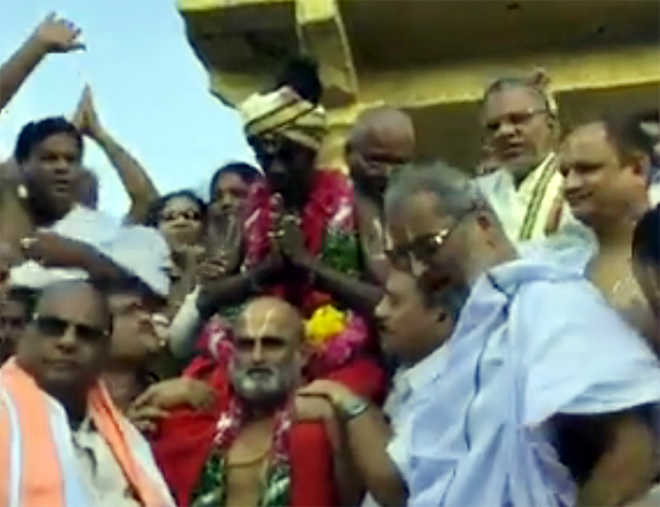Religion is drama. Be it the spectacular opening of the doors of the sanctum sanctorum to the ringing of bells revealing a god lit up in divine splendour or the Sunday Mass celebrating and remembering the sacrifice of the son of God. Recently there was even greater drama at a small nondescript temple in the suburbs of Hyderabad. A Vaishnavite priest of a Balaji temple did something stunningly theatrical. This Brahmin priest, CS Rangarajan, carried Aditya Parasri, a Dalit, on his shoulders into the temple to establish equality of men before god. This act of atonement for the collective guilt of society seems to have triggered a movement, at least, in Andhra Pradesh. On June 14, another temple priest is going to carry a Dalit on his shoulders into the Mohana Ranganayaka Swamy temple in Guntur town. When India became free, the high priest of our freedom movement, Mahatma Gandhi, had chosen Dr BR Ambedkar to head the drafting committee of the Constitution in a similar gesture, lending our Constitution the legitimacy it would not have otherwise gained in an oppressively hierarchical society.
Caste, untouchability and oppression are Indian realities more than Hindu evils. Every religion practices it, particularly against the Dalits, the most oppressed of all people. Just a few weeks ago, a Christian family of Kerala murdered its son-in-law in an extraordinary event of “honour” killing in that so-called progressive state, which produced the first Dalit President and the first Dalit Chief Justice of India. Hindu, Christian or Sikh, priests ought to carry Dalits on their shoulders to express remorse and reconciliation. As a priest, the temple is Rangarajan’s work place also and the symbolism extends to not just a spiritual cleansing of the soul of the feudal lords, but he was also ushering in a man much younger into a place where he was barred hitherto. Beyond the politics of quota, this is a shining example of inclusion that a liberal society needs to understand and emulate. The next logical step, obviously, is to carry Dalit sons-in-law on the shoulders into privileged caste households to ensure equality of men before men.
Unlock Exclusive Insights with The Tribune Premium
Take your experience further with Premium access.
Thought-provoking Opinions, Expert Analysis, In-depth Insights and other Member Only Benefits
Already a Member? Sign In Now










